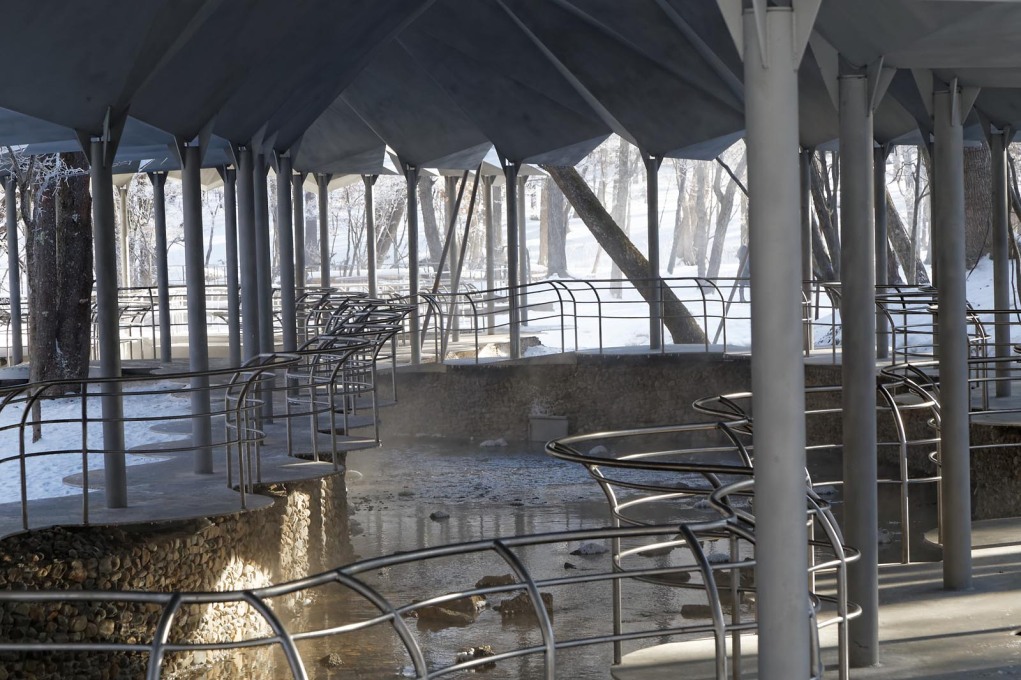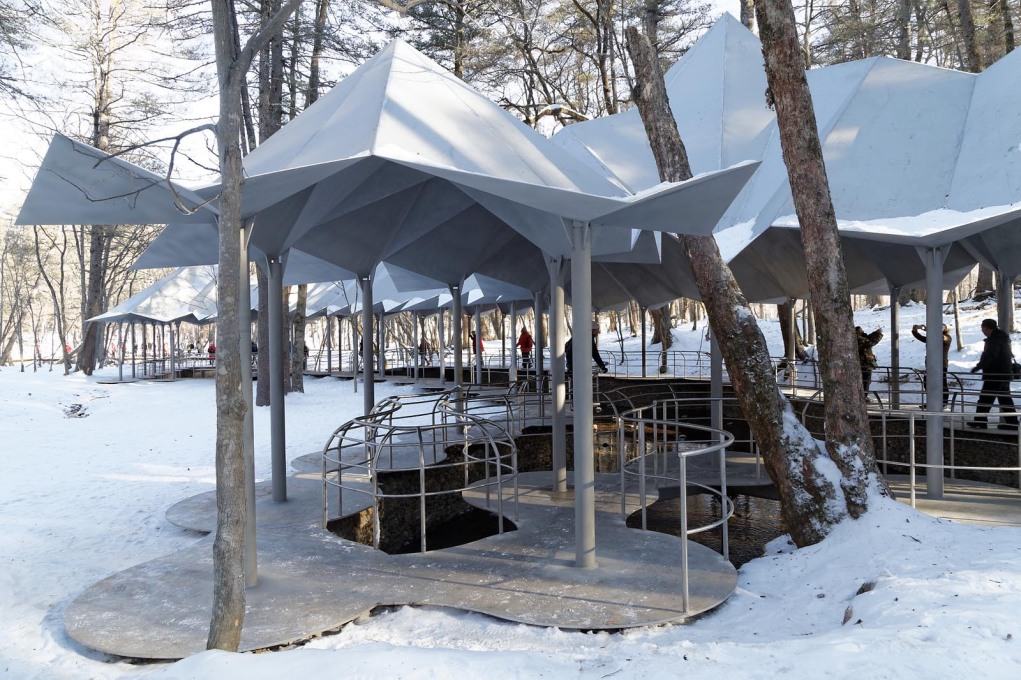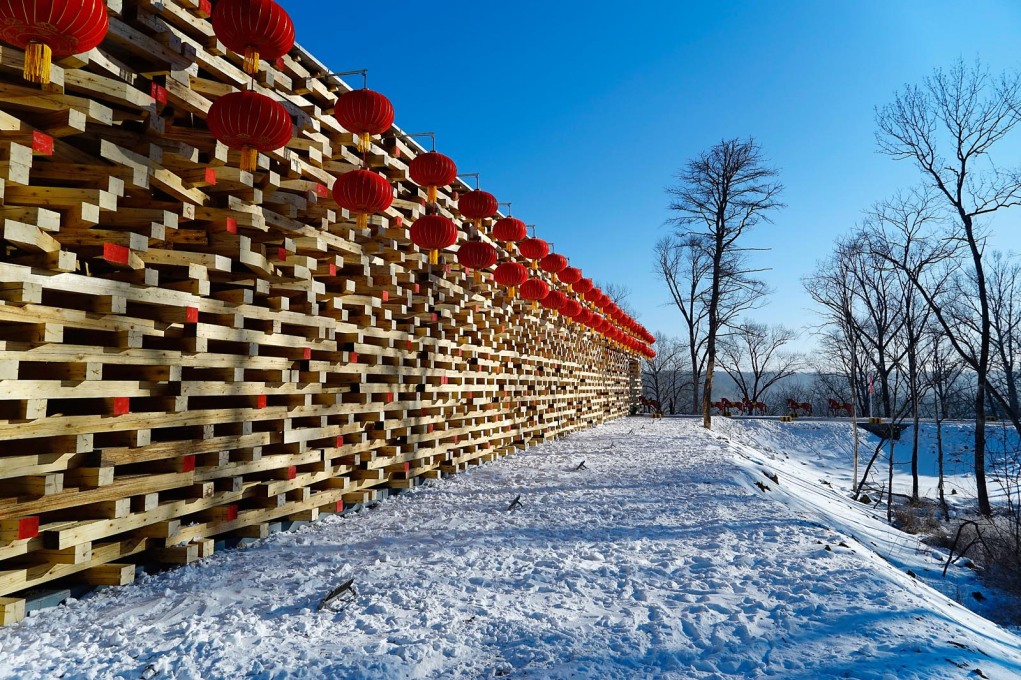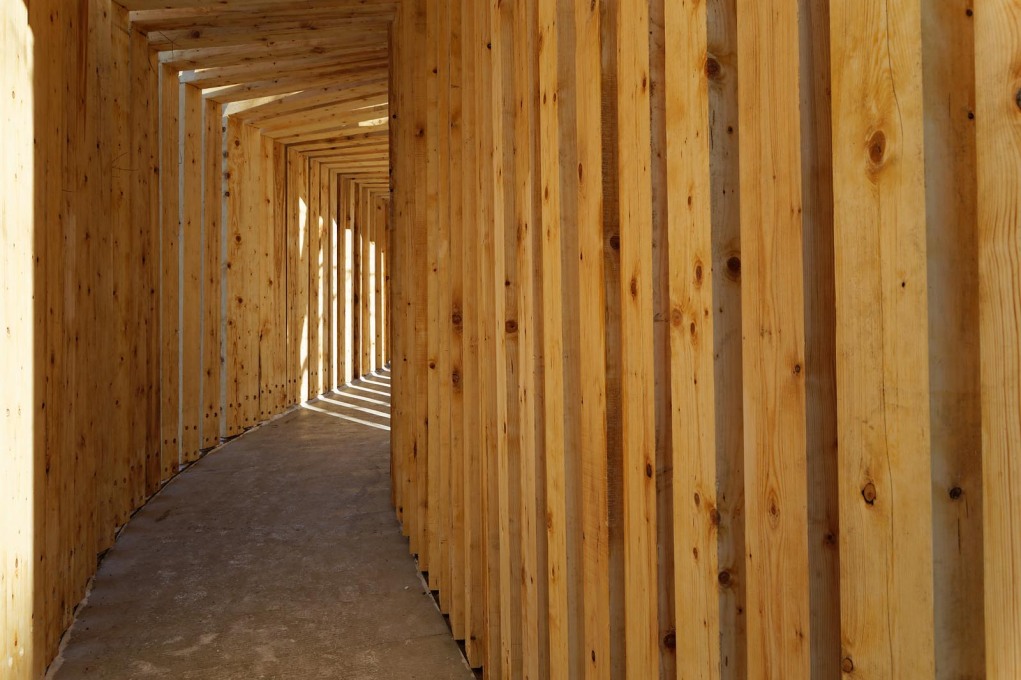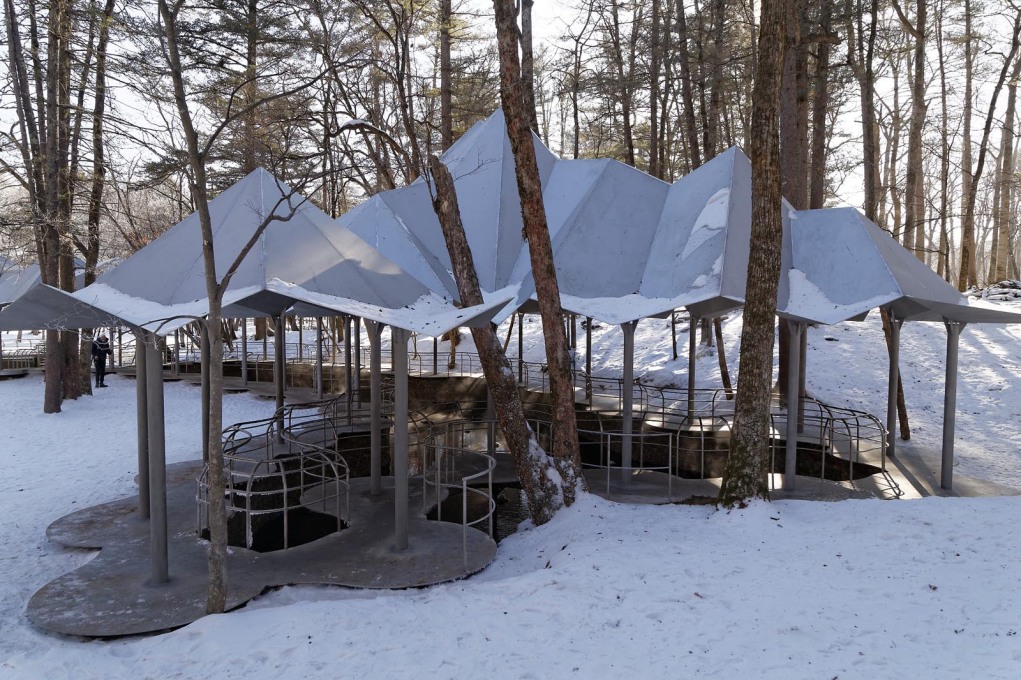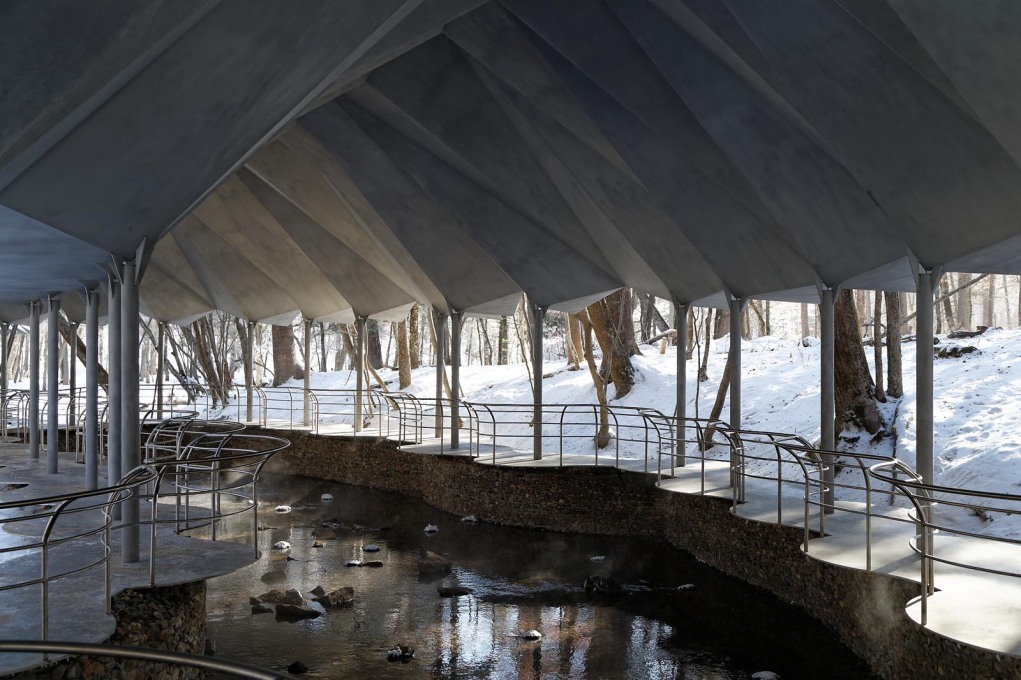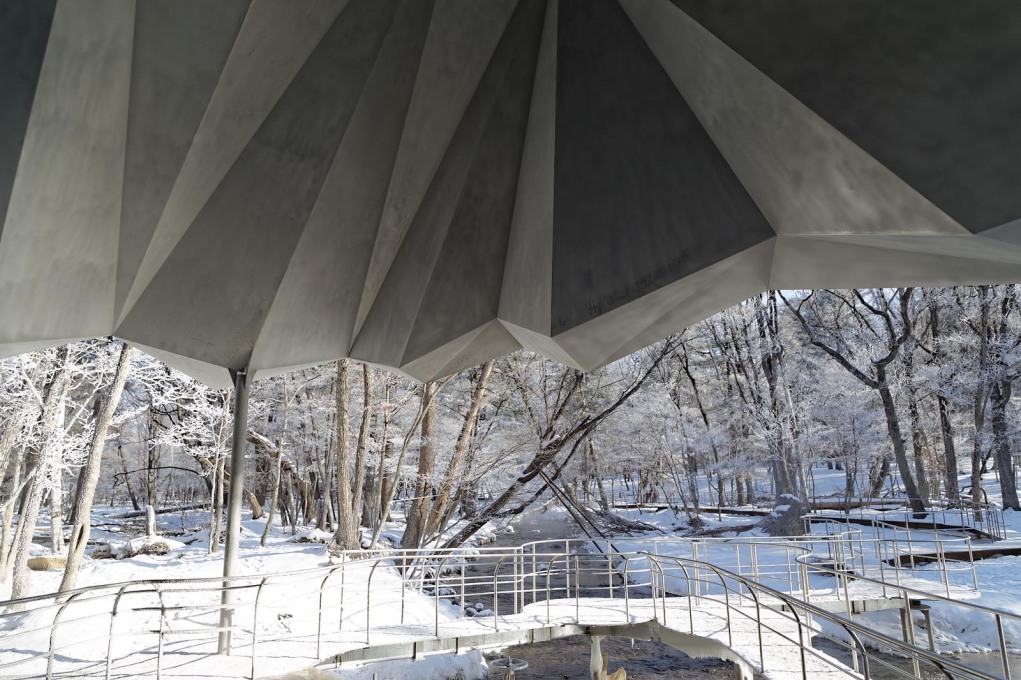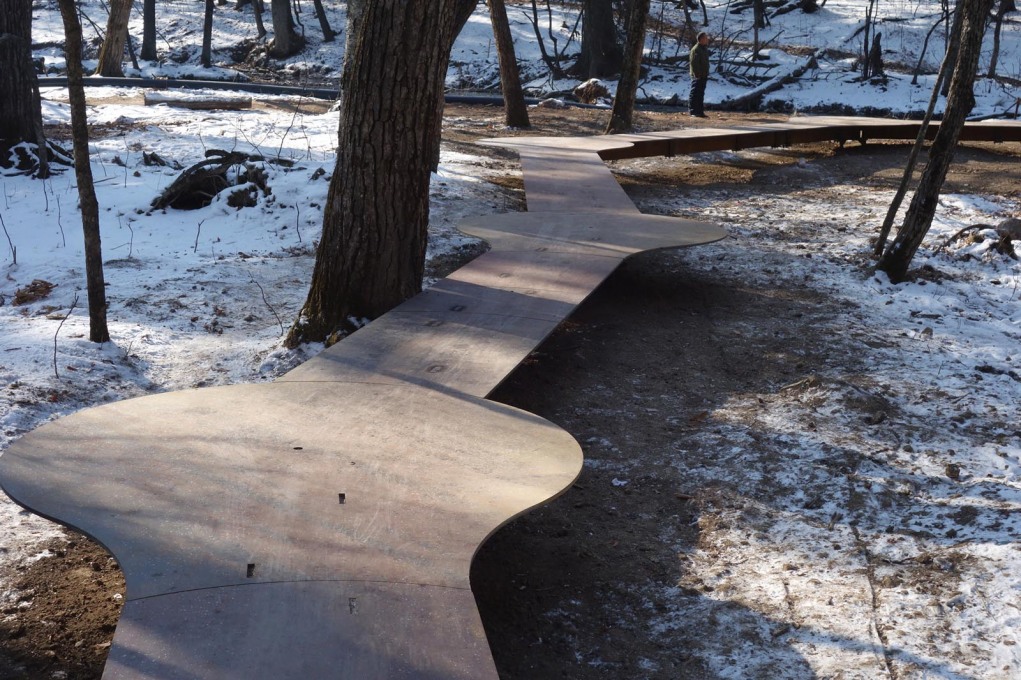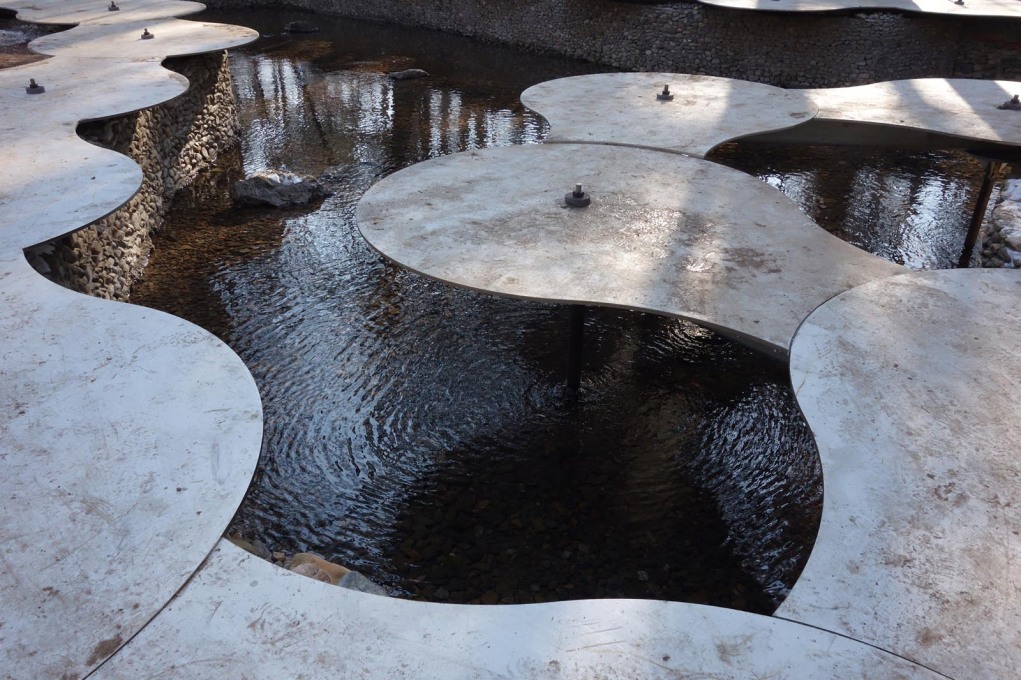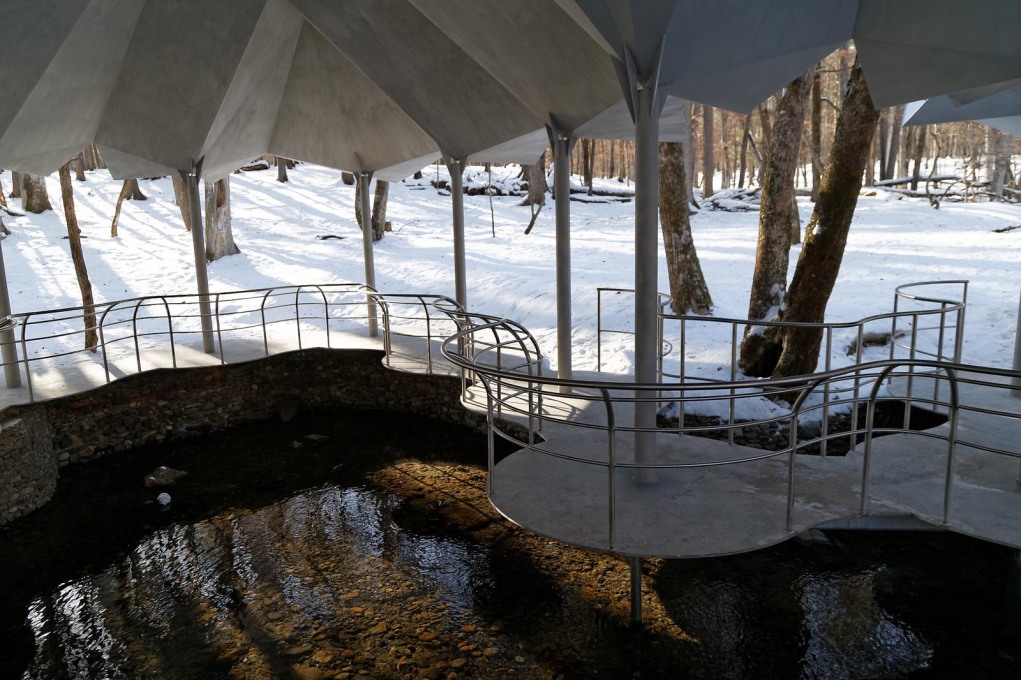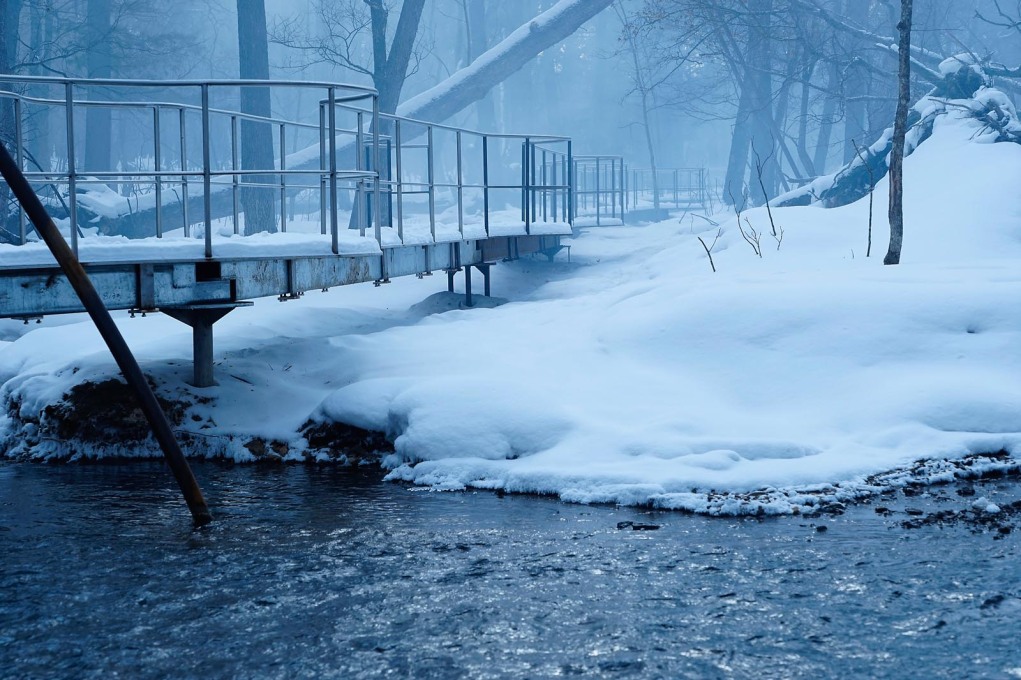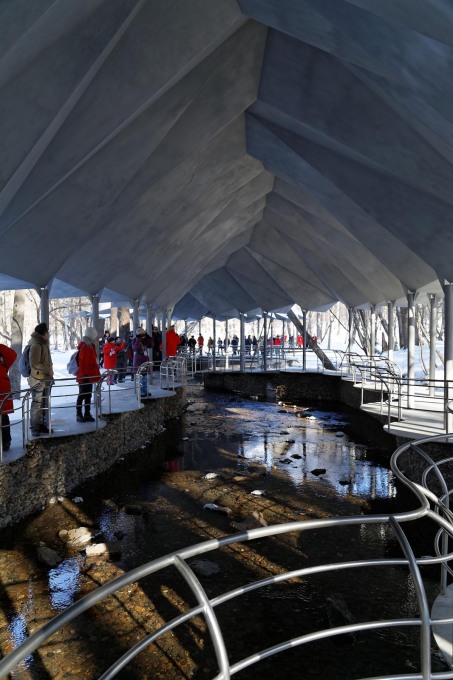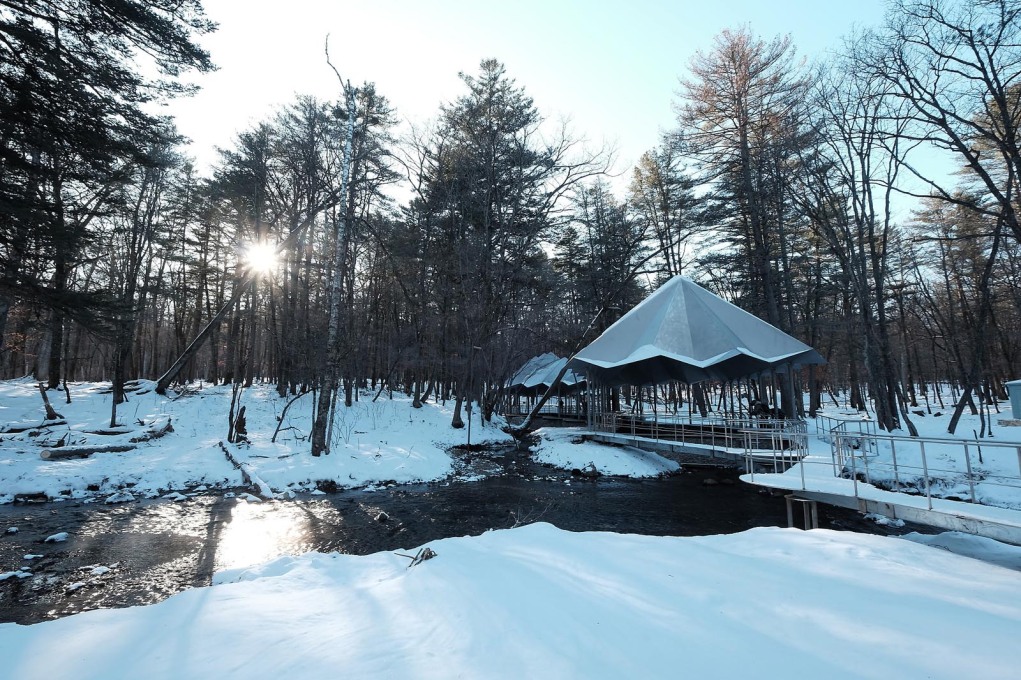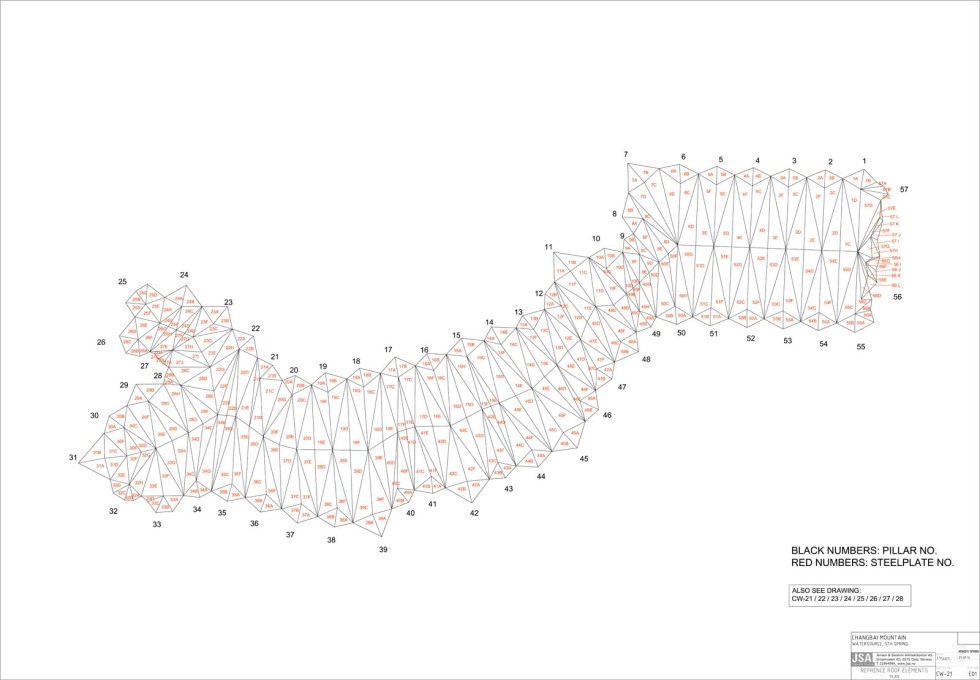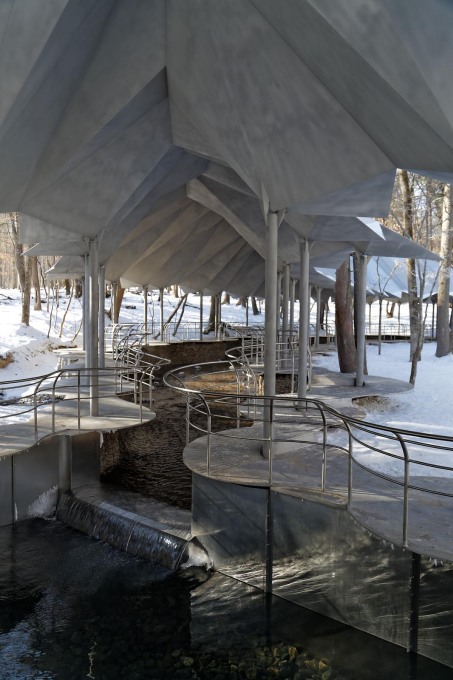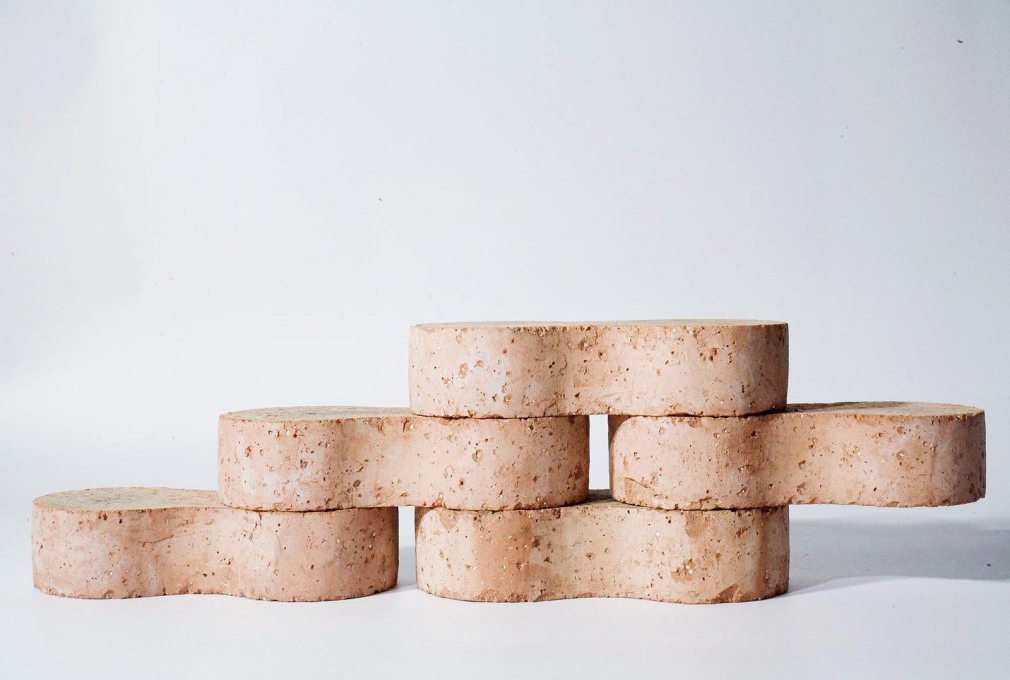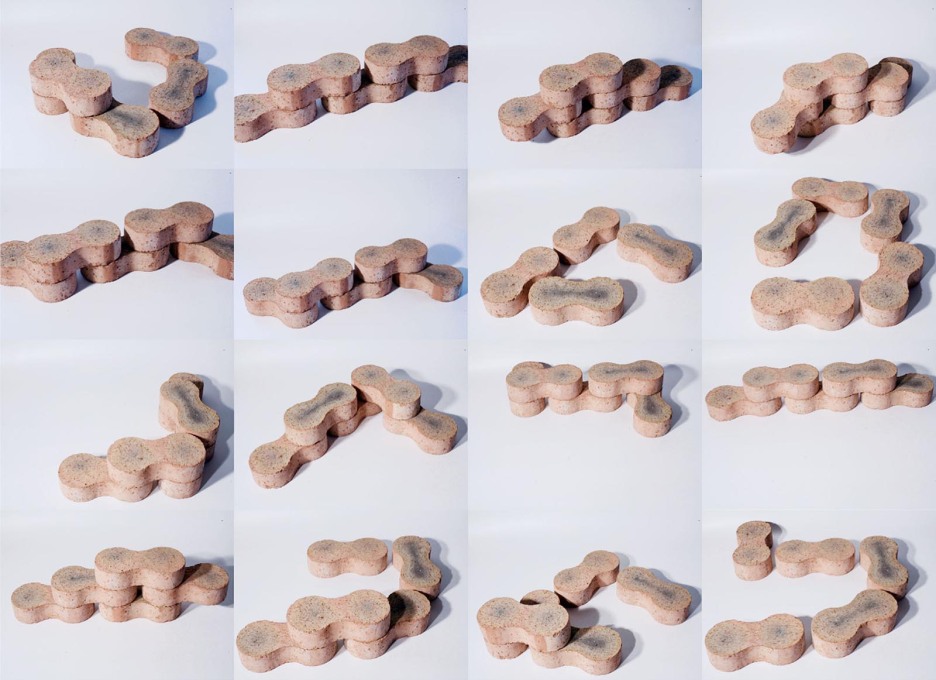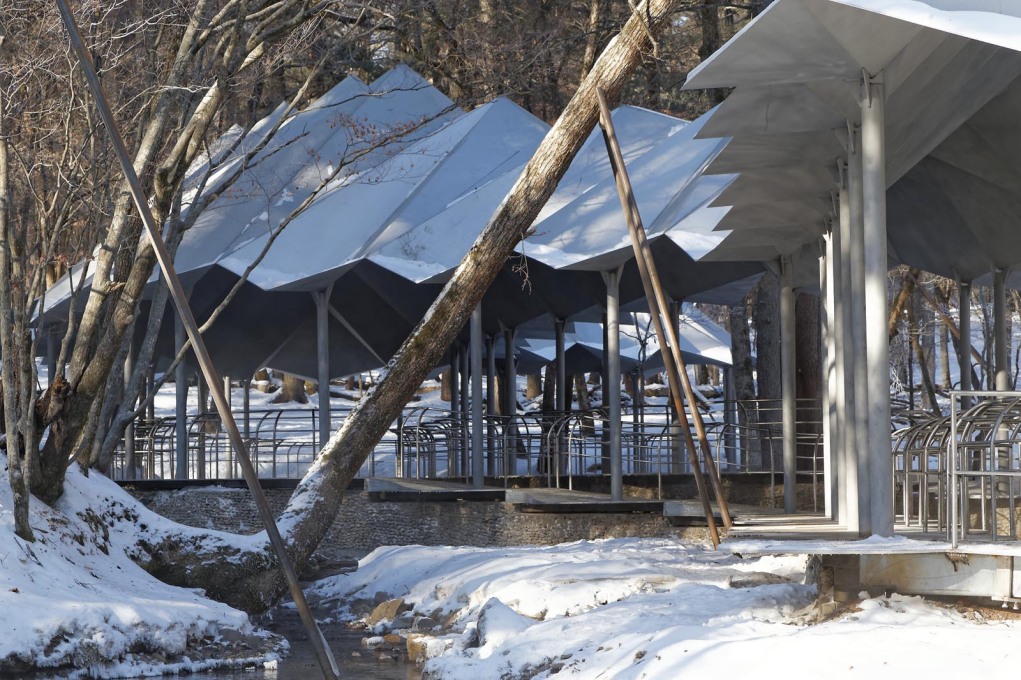Jensen & Skodvin Architects, based in Oslo and known for their sensitive approach towards existing natural elements, have designed a small project at a potable water spring in a forest resort in North China, close to the North Korean border. The area around the spring is a protected forest – the Lushui River National Forest Park – with many large old trees. Therefore the client, a water supplier, needed to protect the landscape while simultaneously requiring improved access to and weather protection over the springhead itself.
The main elements of the commission are a path constructed of steel and a canopy roof made of folded sandblasted steel plates only 4 mm thick. The architects also designed an entrance structure to the site, made of 200 x 200 mm sections of pine treated and coated with warm tar. Einar Bjarki Malmquist talked to Jan Olav Jensen, one of the partners of Jensen & Skodvin Architects, who gives us the inside story.
EBM: How did your office in Norway get this project in China?
JOJ: We got an email, as simple as that, asking if we would like to come to China to see a plot of land and discuss a possible project. We knew very little of what it was about. So, I went there and we were commissioned first to do a concept study. We presented that in China, and were commissioned further, to do a preliminary design proposal. Then later to work up details and working drawings. It all happened step by step with us knowing very little at each step about the next. This made it a very exciting and interesting commission.
Why was it exciting?
There was a lot of energy in the process and it went fast. We made the first sketches a year ago, the working drawings last summer and autumn, and the building was finished a few weeks ago. Over one year we made almost a thousand drawings. The project went so much faster and with much more passion and energy than any similar project here in Norway. Here it would probably still be at a preliminary stage. Yet despite it going so fast, the overall craftsmanship and the precision of the details is extraordinary.
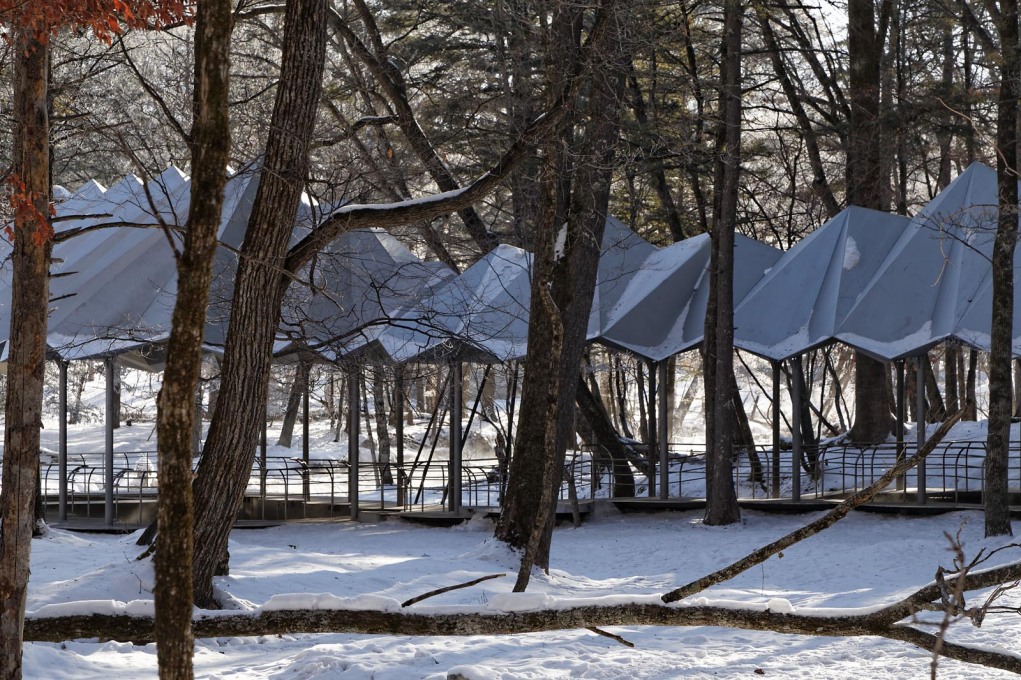
What other differences have you experienced compared to working in Norway?
It is very similar really. For a successful result one depends on a good relationship with the client – as with all projects. It was obvious that this project meant a lot to them. In Norway you can often be at a distance to the real client or everyday user, the one who will live with your decisions day to day. Instead you sit and talk to someone who might not care that much about the result or really know what’s needed. That’s the big difference compared to the water project in China: the people were eager and committed throughout the whole process.
Perhaps we had an exceptional client on this project in China. I do not want to romanticise it, but they seemed very sensible in terms of what the brief needed, and flexible when changes were needed to improve the project: something I think the National Office of Building Technology and Administration in Norway could learn a lot from. The way mindsets and bureaucracy works in Norway is literally dangerous for good architecture. It’s a fundamental problem.
I have always thought that it’s clever to listen to others and my experience in China underlined this. My own roots are mixed, from several cultures, and I’ve always found it exciting to hear and see how other people think and do things. How they solve problems. How they live. Norway is more open now: luckily. But, there’s always a reason to open up further and get inspired. To meet the people and work on this project was a huge inspiration.
Your office is known for being good at dealing with existing landscapes, often using tiny foundations, for instance, to protect trees. This was also an important aspect of this commission…
Yes… the plot of land was really challenging. With such a protected, well-preserved landscape with many tall, old trees, we had to pinpoint carefully the spots to lay foundations for the path in between the tree roots, all this in dialogue, of course, with both the client and the preservation authorities. Meanwhile all the materials had to be transported by workers to the construction site, so we had to think from the beginning about the dimensions and weight of the construction elements based on what our workers could carry. We also created a path around the area where the potable spring water surfaces, reusing an old existing stone wall as foundation.
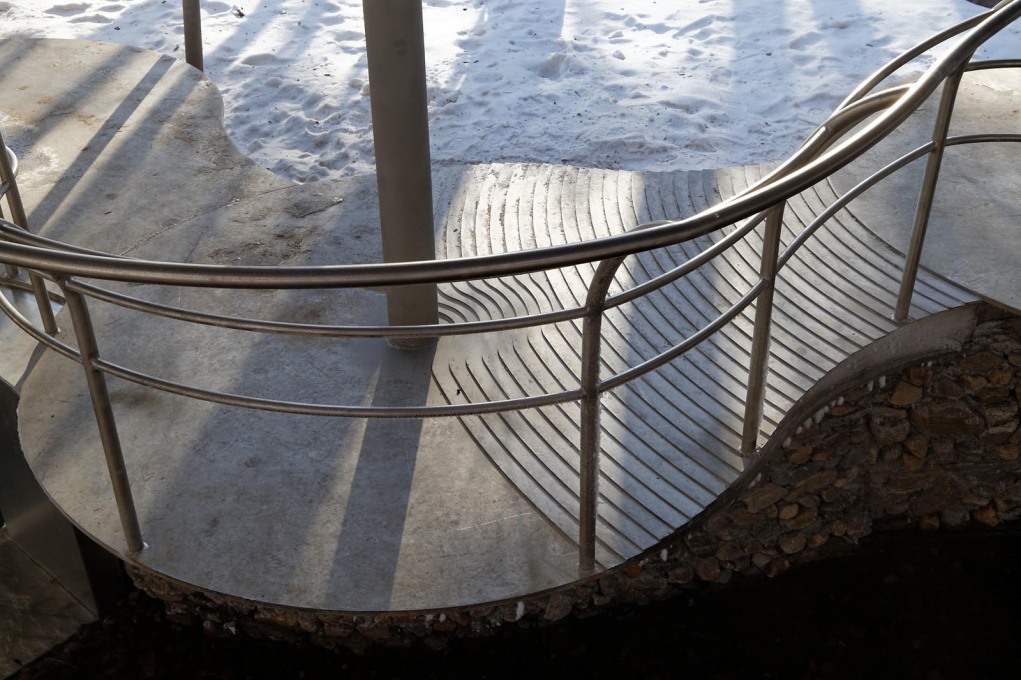
Can you tell us a little about the flexibility of the round, circular shaped steel sheets that sit over the foundation points for the path?
This round element is probably the most important invention of the project. It was there from the beginning of the concept studies and it made it possible for us to choose the direction of the path easily, based on the measured positions of each foundation. A steel beam stretches between these specific points placed under the path. Thanks to this round detail, adapting the direction of the path from one foundation point to the next one was no problem.
This reminds me, in terms of its logic, of an earlier project you did: a prototype brick you designed, the geometry of which allows you to change the alignment of a wall with each successive brick.
You mean “The Lady Brick” which we designed few years ago? Yes, it’s based on a similar idea. Each brick can be laid in a direction independent of the one before it because of the rounded ends: it resembles a number 8. The only fixed relationship is the distance between the centres of the geometric circles that generate each brick’s circular geometry – its points of rotation. Similarly the centres of rotation in the project in China are the geographic points between the trees.
It’s interesting to compare this to what has been a popular theme with architects in recent years, so–called “parametrics”: where repetitive construction elements based on an overall geometric strategy are used to make the curves or surfaces of buildings. With such projects, for example for a museum or a sport stadium, the final resolution of their shape is very flexible. There are often no restrictions in the plan: nothing from the real world other than gravity to disturb the implementation of the idea: unlike here with the protected forest site!
In general terms, such parametric projects have huge freedom when it comes to deciding their visual aspect. If you want a particular proportion to appear, then you can just move or stretch the construction accordingly. These decisions are more or less independent from the surrounding landscape. At the springwater project things were obviously not that flexible. If you had to move the construction around a tree, a stone or over a river, then that is what you had to do. No matter if there were other solutions you might ideally prefer. The stubborness of nature, its absolutes and given limits, is the problem that frames the question and the construction has to come up with an answer for this. This makes it difficult – but fun.
– Einar Bjarki Malmquist is an architect, at Malmquist Arkitektur, and editor of Arkitektur N, The Norwegian Review of Architecture.




